
China
20:35, 19-Feb-2018
CGTN: A communicator between China and the world
By Wang Lei
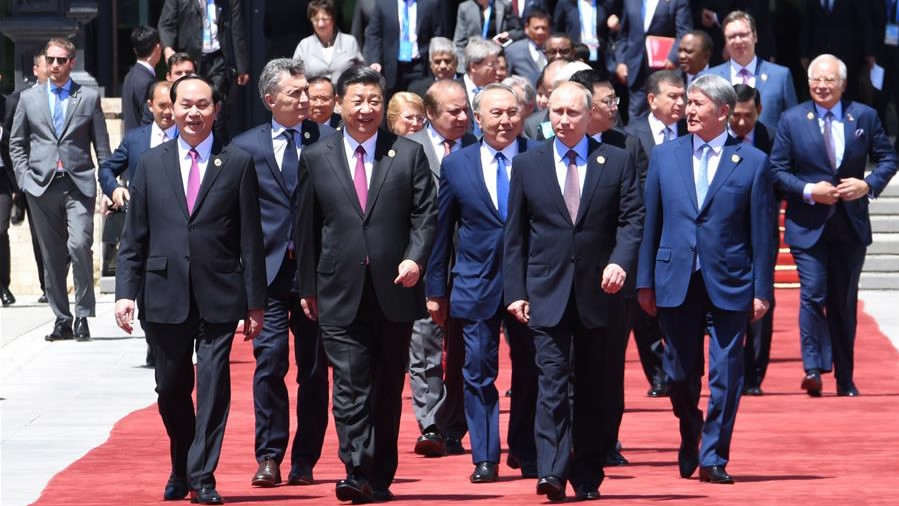
On February 19, 2016, Chinese President Xi Jinping called on the nation's leading news providers to amplify their voices on the international stage, tell stories about China well and connect China to the world.
Xi, also general secretary of the Communist Party of China (CPC) Central Committee, made the remarks while presiding over a symposium on the Party's media work, following his visits to the People's Daily, Xinhua News Agency and China Central Television (CCTV) earlier that day.
Two years on, China Global Television Network (CGTN) – a CCTV subsidiary – has become an effective communicator between China and the world.
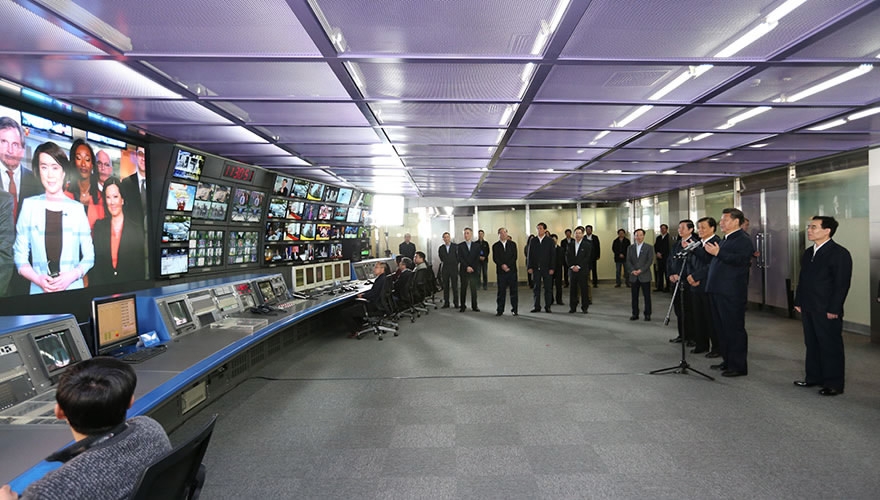
February 19, 2016: Chinese President Xi Jinping (2nd R) makes a video call to CCTV's Washington-based North America branch at the headquarters of CCTV, the state broadcaster, in Beijing. /CCTV Photo
February 19, 2016: Chinese President Xi Jinping (2nd R) makes a video call to CCTV's Washington-based North America branch at the headquarters of CCTV, the state broadcaster, in Beijing. /CCTV Photo
Xi's messages to new media
The Chinese president expressed his great expectations for new media in the digital age. Speaking to representatives of media groups at the symposium, Xi asked them to make use of new media's edge in publicity and build flagship media groups with strong global influence.
Launched on December 31, 2016, CGTN is a prime example of China's efforts to communicate with the global audience in new media formats. It integrates television, app, Facebook, Twitter, Weibo and WeChat platforms and provides news services in English, Spanish, French, Arabic and Russian.
In his congratulatory letter to CGTN, Xi said: "The relationship between China and the rest of the world is undergoing historic changes. China needs to know better about the world and the world needs to know better about China."
He noted that CGTN should tell stories about China well and spread China's voice well; enable the world to see a multidimensional and colorful China; present China as a builder of world peace, a contributor to global development, and an upholder of international order; and make efforts to build a community of shared future for mankind.
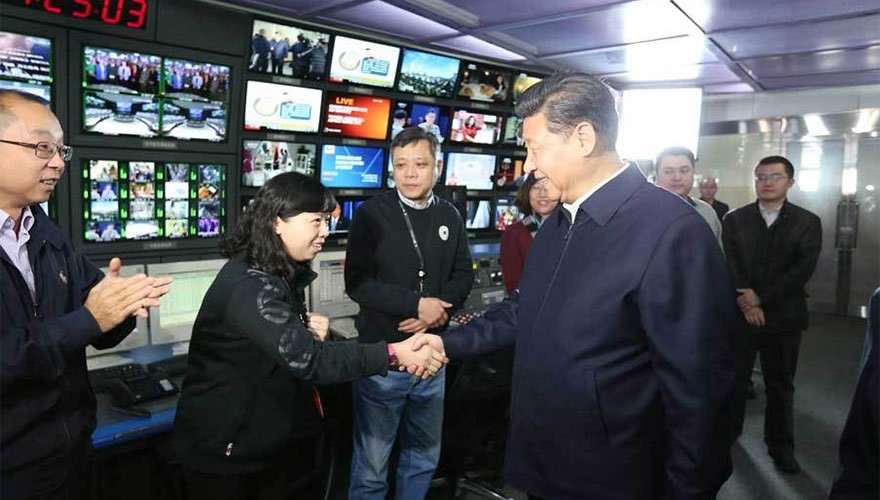
February 19, 2016: Chinese President Xi Jinping (R, front) shakes hands with a staff member at the headquarters of CCTV. /CCTV Photo
February 19, 2016: Chinese President Xi Jinping (R, front) shakes hands with a staff member at the headquarters of CCTV. /CCTV Photo
CGTN's commitment to integration
As a brand-new media group, CGTN has been committed to the integration of versatile news production resources and distribution channels since its birth.
"Some argue that content is king, others champion technology, and yet others put accessibility above everything else," CGTN Controller Jiang Heping said at a media forum last December. "In the media today, only integration can be king."
As a multi-lingual, multi-platform institution, CGTN is also committed to the convergence of traditional and new media. It operates six TV channels, three overseas production centers, a video content provider and a digital media division.
According to Jiang, CGTN's TV channels are available in 170 countries and regions worldwide, watched by a total of 387 million viewers; its digital media platforms boast more than 87 million global subscribers; and that there have been over 3.1 million downloads of CGTN's mobile news app.
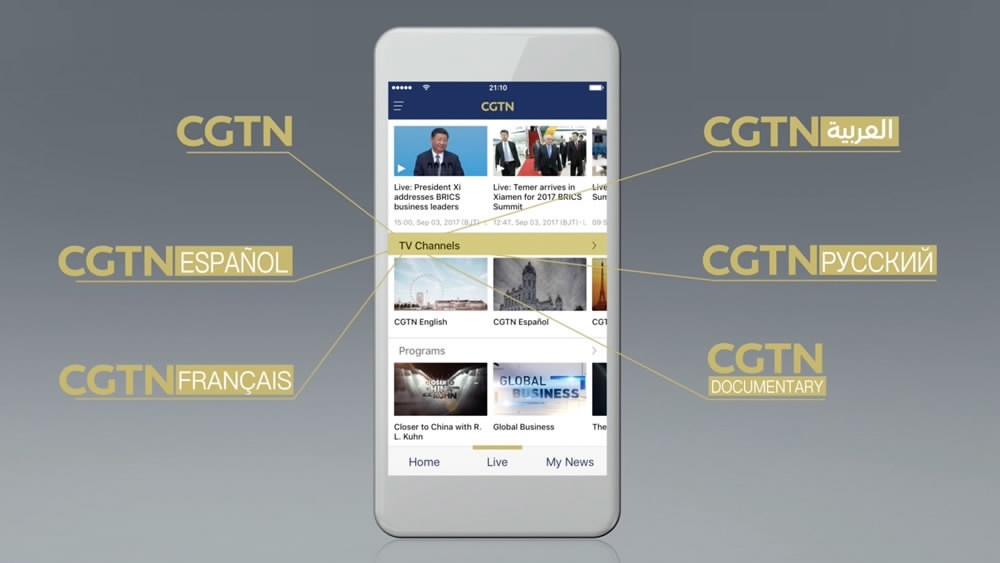
CGTN Photo
CGTN Photo
Explaining China's stances
With China moving closer to the world center stage, international audiences have shown growing interest in its roles in major global issues. CGTN has been explaining China's positions and goals and boosting understanding between the country and other players in the world.
When China was blamed for failing to stop the Democratic People's Republic of Korea (DPRK) testing missiles, CGTN explained why China does not hold the key to breaking the deadlock, while underscoring Beijing's commitment to the goal of denuclearization on the Korean Peninsula.
When China was questioned for its motives in promoting the Belt and Road Initiative, CGTN made it clear that the project aims to bring benefits to all countries involved by strengthening interconnectivity in the areas of policy, infrastructure, trade, finance and non-governmental exchanges.
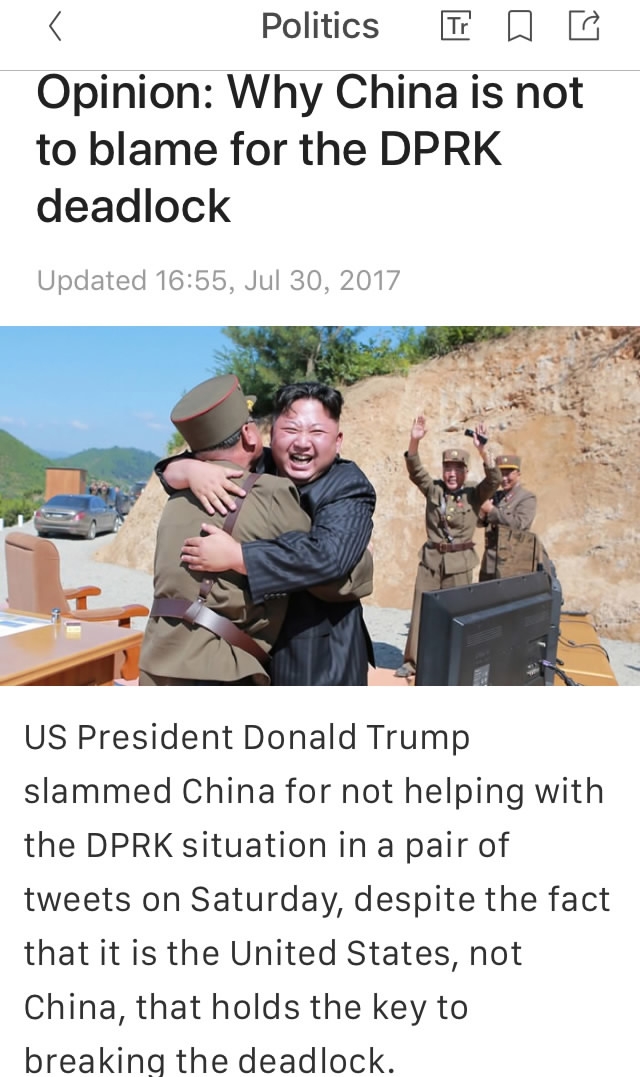
CGTN explains why China is not to blame for the DPRK deadlock. /CGTN App Screenshot
CGTN explains why China is not to blame for the DPRK deadlock. /CGTN App Screenshot
When the China-proposed concept of building a community of shared future for mankind becomes a buzzword, CGTN elaborated on the Chinese wisdom for better global governance, highlighting the country's determination to work for an equal, open and peaceful world.
(Top photo: Chinese President Xi Jinping, foreign delegation heads and guests walk out of Yanqi Lake International Convention Center after the first session of the Leaders' Roundtable Summit at the Belt and Road Forum for International Cooperation in Beijing, May 15, 2017.)
5km

SITEMAP
Copyright © 2018 CGTN. Beijing ICP prepared NO.16065310-3
Copyright © 2018 CGTN. Beijing ICP prepared NO.16065310-3